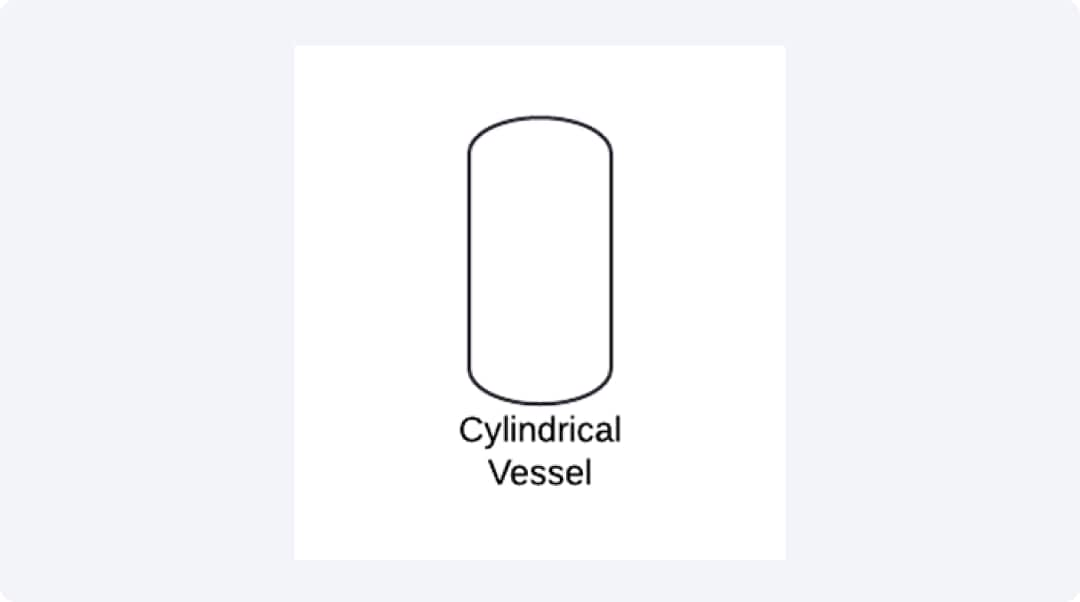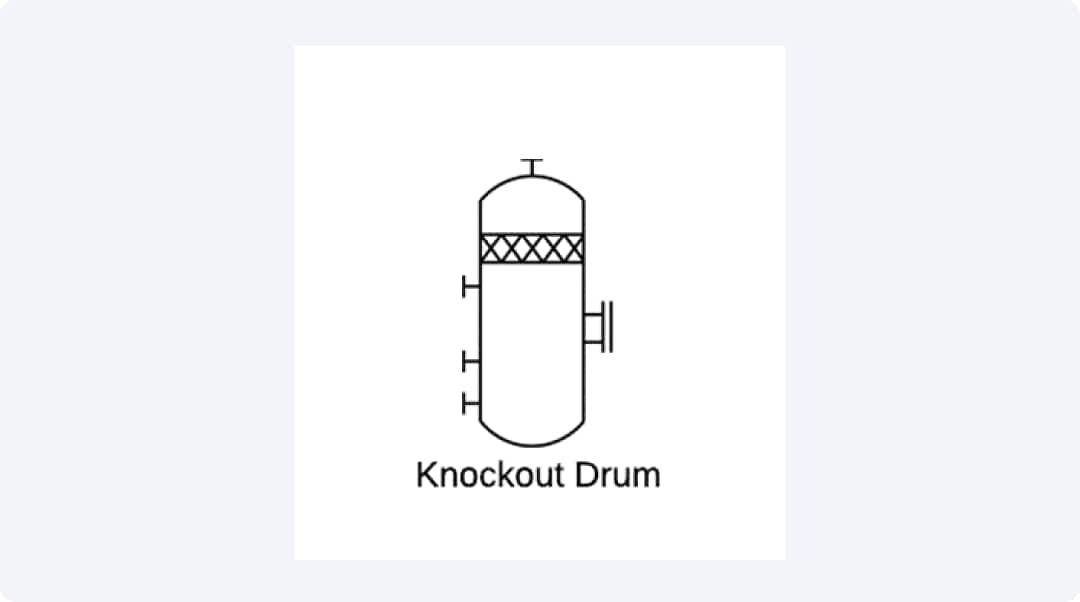In industrial processes, vessel symbols are essential for creating clear and effective Piping and Instrumentation Diagrams (P&IDs). These diagrams are crucial for the design, maintenance, and operation of industrial systems, providing a visual representation of the process flow and the equipment involved.
This article focuses on various vessel symbols used in P&IDs, offering illustrations and descriptions for each. Additionally, we will guide you on how to create a P&ID using EdrawMax, a versatile and free online tool.
In this article
Part I. Vessel symbols for P&IDs
Vessel symbols are a crucial part of Piping and Instrumentation Diagrams (P&IDs), providing a visual representation of the equipment used in industrial processes.
Below are some commonly used vessel symbols, along with their descriptions and examples of how they are applied in real-world scenarios.
Cylindrical Vessel

This symbol represents a cylindrical vessel, used to store liquids and gasses under pressure. It is commonly found in chemical plants and refineries.
Spherical Vessel

The spherical vessel symbol indicates a vessel used to store gasses under high pressure. It is typically used in the petroleum industry.
Horizontal Vessel

This symbol represents a horizontal vessel, often used for storage or separation processes. It is commonly found in oil and gas industries.
Vertical Vessel

This symbol denotes a vertical vessel, which can be used for storage, separation, or reaction processes. It is widely used in chemical and petrochemical industries.
Drum

The drum symbol represents a cylindrical container used for storage or separation of liquids. It is commonly used in refineries and chemical plants.
Tank

The reaction vessel symbol indicates a container used for chemical reactions. It is commonly used in pharmaceutical and chemical manufacturing.
Heat Exchanger Vessel

This symbol represents a vessel used in heat exchange processes, where heat is transferred between fluids. It is commonly found in HVAC systems and chemical plants.
Separator Vessel

The separator vessel symbol denotes a container used to separate different phases of a mixture. It is typically used in oil and gas processing.
Accumulator

This symbol represents an accumulator, used to store energy in the form of pressurized gas or liquid. It is commonly used in hydraulic systems.
Mixing Tank

This symbol indicates a mixing tank which is used to mix multiple liquid or solid components to create new products or achieve homogeneity.
Knockout Drum

This symbol represents a knockout drum, used to remove liquid droplets from gas streams. It is commonly used in natural gas processing.
Tray Column

This symbol represents a column of any type such as distillation column, adsorption column or absorption column. It is used for many purposes such as separating, mixing or purifying components.
Dome Roof Tank

This symbol indicates a tank with a domed roof, it is mostly used as a container for raw materials which do not have a high moisture content and are not volatile.
Part II. Make a P&ID with EdrawMax for Free
EdrawMax is a versatile, free, and online diagramming tool that offers a wide range of symbols and templates to create professional P&IDs. Its user-friendly interface and extensive library make it an excellent choice for engineers and designers.
Step-by-Step Guide to Creating a P&ID with Edrawmax
Step 1: Sign Up or Log In
Visit the EdrawMax website and sign up for a free account or log in with Wondershare id, Google, Facebook, or Twitter.

Step 2: Start a New Project
Once logged in, click on "More”, and choose “Industrial Process”. Use one of the many templates available or proceed by choosing to start with a blank diagram.

Step 3: Select Symbols
From the symbol library, select the symbols you need. EdrawMax offers a comprehensive collection of symbols.

Step 4: Place and Connect Symbols
Drag and drop the selected symbols onto your workspace. Connect them using lines to represent the flow of fluids between different components.

Step 5: Customize and Annotate
Customize the symbols and add annotations to provide more details about each component. You can change the size, color, and labels as needed.

Step 6: Save and Export
Once your P&ID is complete, save your project. You can also export it in various formats such as PDF, PNG, or SVG for sharing or printing.

By following the steps and utilizing the symbols provided, you can create accurate and professional P&IDs that clearly represent your vessel systems.
Part III. Conclusion
In conclusion, anyone within an industrial process environment should know vessel symbols. We see that clear P&IDs improve communication. They make operations safer and more efficient. These symbols will help with diagrams of system schematics. They will also aid in using tools like EdrawMax for system design and maintenance.




